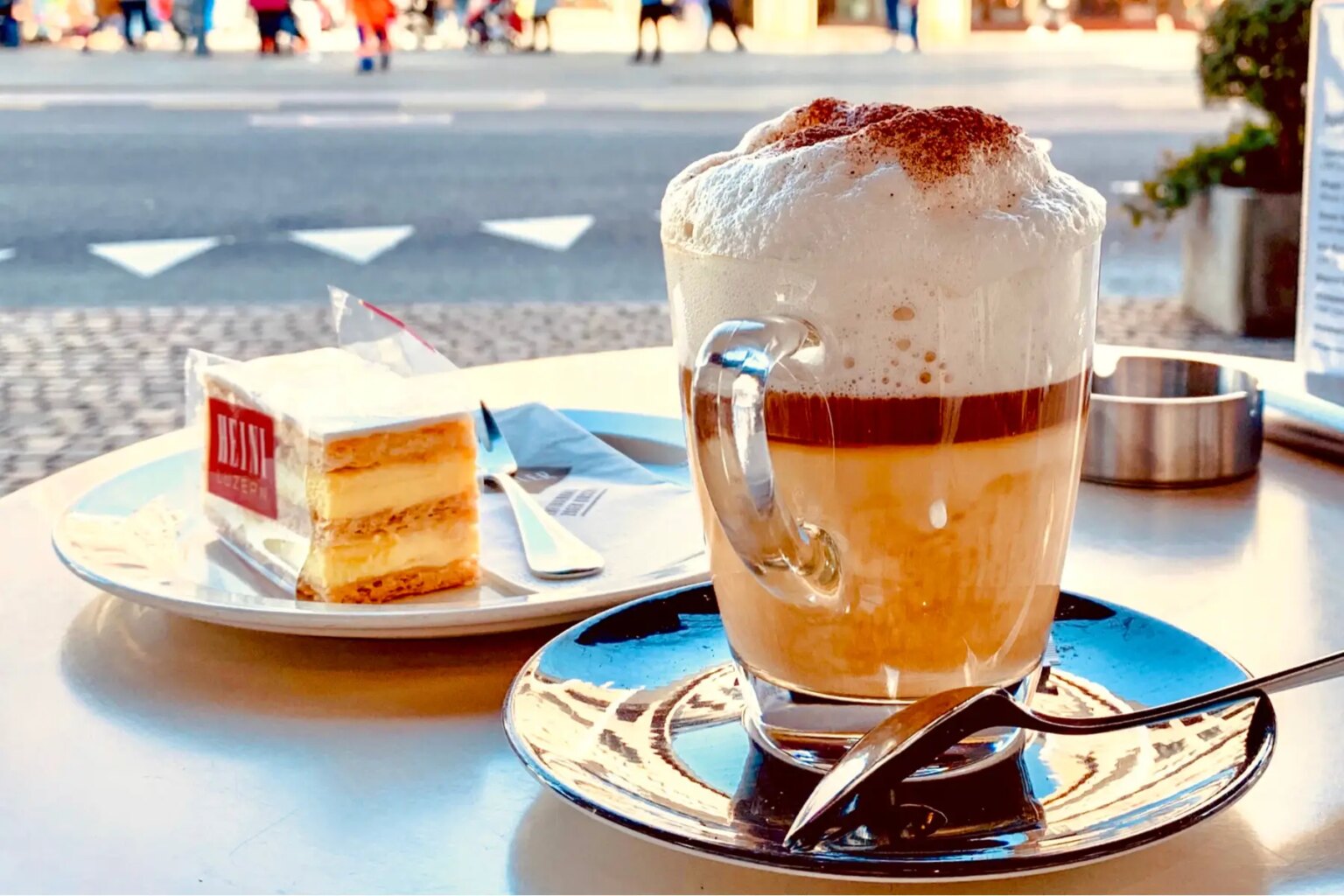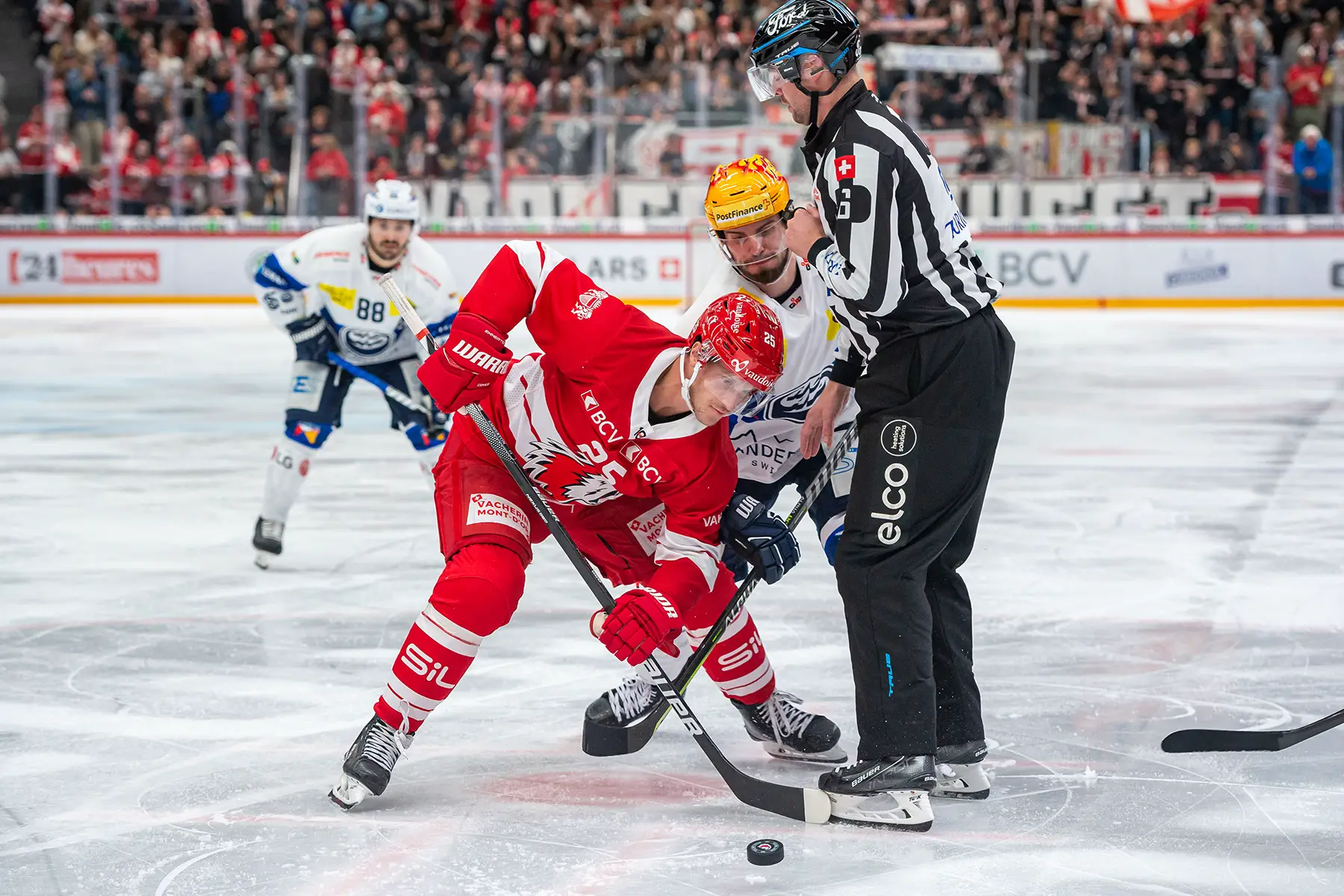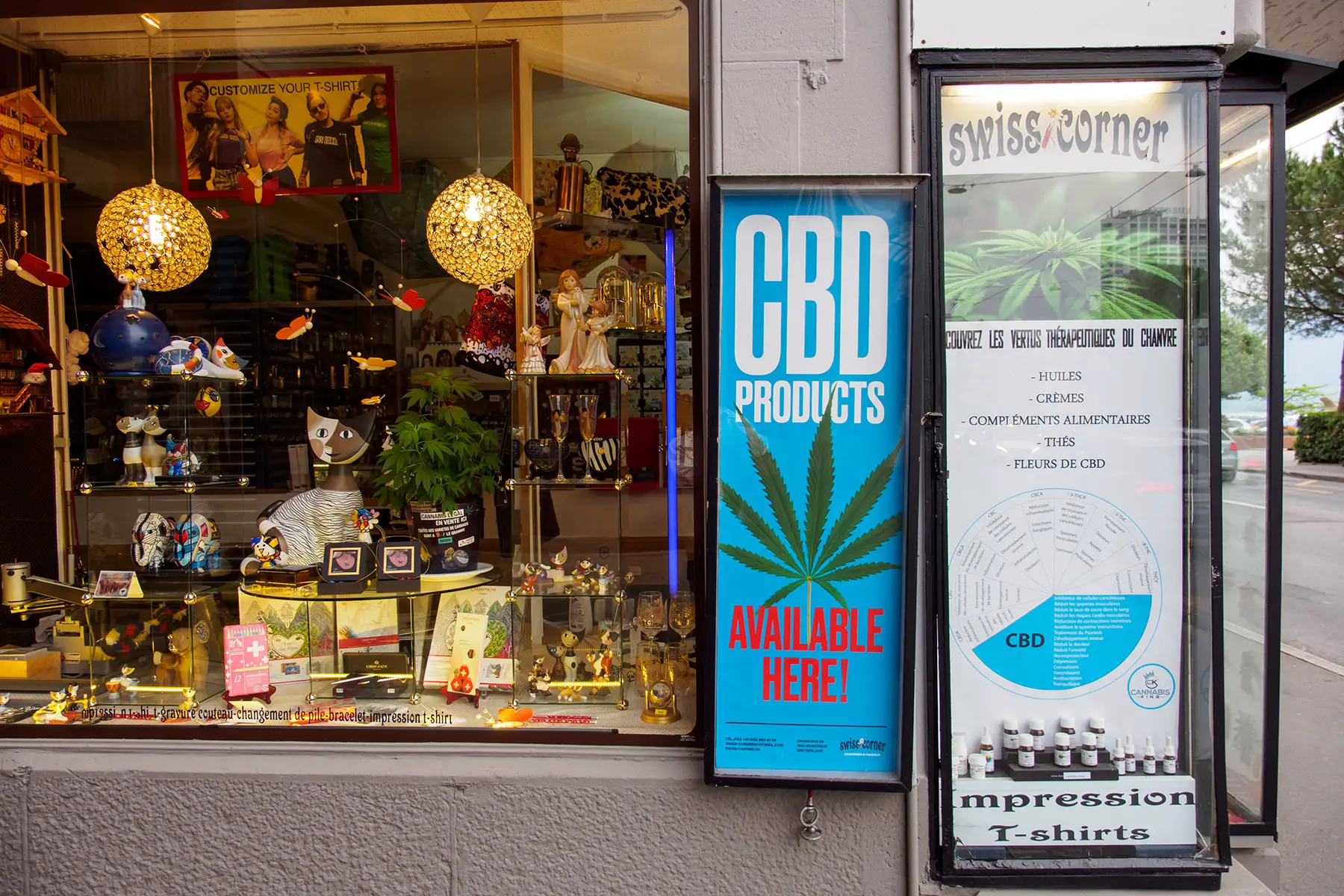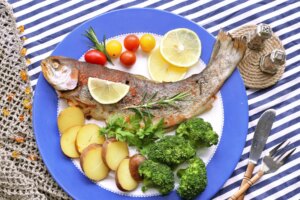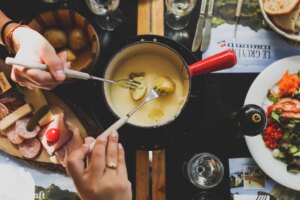Swiss drinking culture goes back centuries and comes with quite a reputation. Commenting on the Swiss in 1601, the French diplomat Daniel L’Ermite even wrote, “Drinking is their passion, their delight, their biggest expense. They drink together, they bargain together while drinking and even conclude the most important business” when drinking. In fact, “to drink like a Swiss” was a common saying in the 17th century. Indeed, you will certainly find plenty of offerings to quench your thirst in the land of mountains and chocolate.
To tell you all you need to know about the country’s drinking habits and traditions, this guide includes the following:
An overview of Swiss drinking culture
Naturally, some Swiss drinking habits have changed over the decades, such as the extreme fondness for the bottle that many Helvetians seemed to share back in the days. That said, the sound of clinking glasses is still very much heard across the country today. Be it wine, beer, or grappa, drinking is very much part of the local culture. Indeed, Swiss people love to gather at cafes and bars, or pair the nation’s most delicious dishes with a drink.
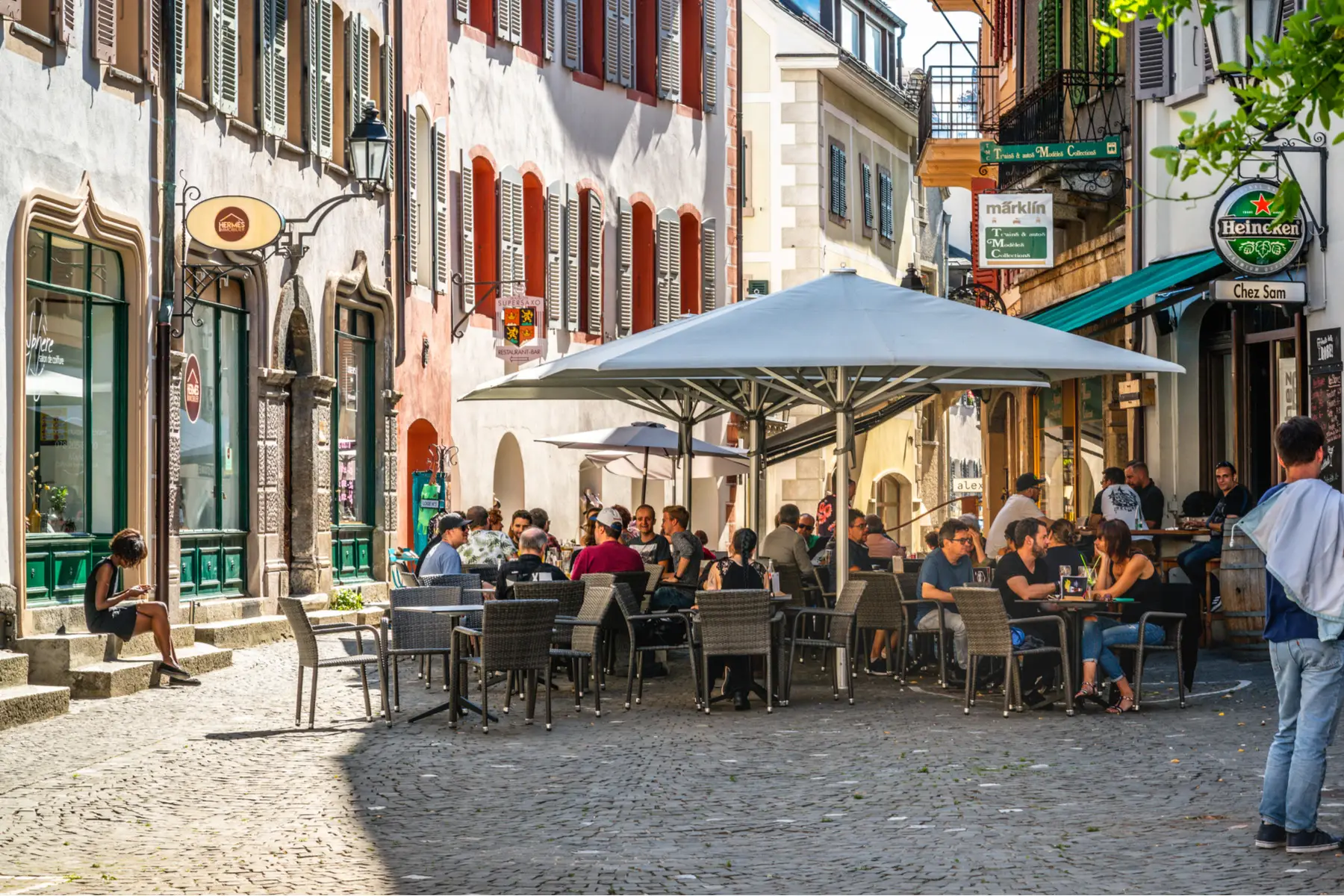
Drinking is also a great way for the Swiss to socialize or unwind after work. White wine, in particular, is highly popular and traditionally served with fondue – one of the most hearty foods in the Swiss diet. But it’s not all about alcohol. Hot chocolate, Ovomaltine, and even good old natural water (of which the Swiss consume an average 115 liters per person a year) are all staples of Swiss drinking culture too.
Hot drinks in Switzerland
Given Switzerland’s bitterly cold winters and stature as a world-class ski destination, it’s hardly surprising that the country boasts an extensive menu of hot drinks. Not only are these perfect for warming up during the chillier months, but they are also a delight to the taste buds. Here are the main types of hot drinks on offer throughout Switzerland.
Tea
The Swiss are very much into their hot beverages. Although coffee, tea, and chocolate didn’t appear until the 18th century (wine was the beverage of choice up until then), they quickly became a key part of the Swiss diet and culture. Afternoon tea was a marker of wealth, and a recurrent habit among the well-heeled.
The popularity of tea continues today, and Switzerland even has an active tea scene. Indeed, there are a number of stylish specialist tea shops and tearooms in several major cities, from Basel and Bern to Geneva and Lucerne. Tea is even grown on and around the hill of Monte Verità, above Ascona and Lake Maggiore, in a tiny tea plantation called Casa del Tè.
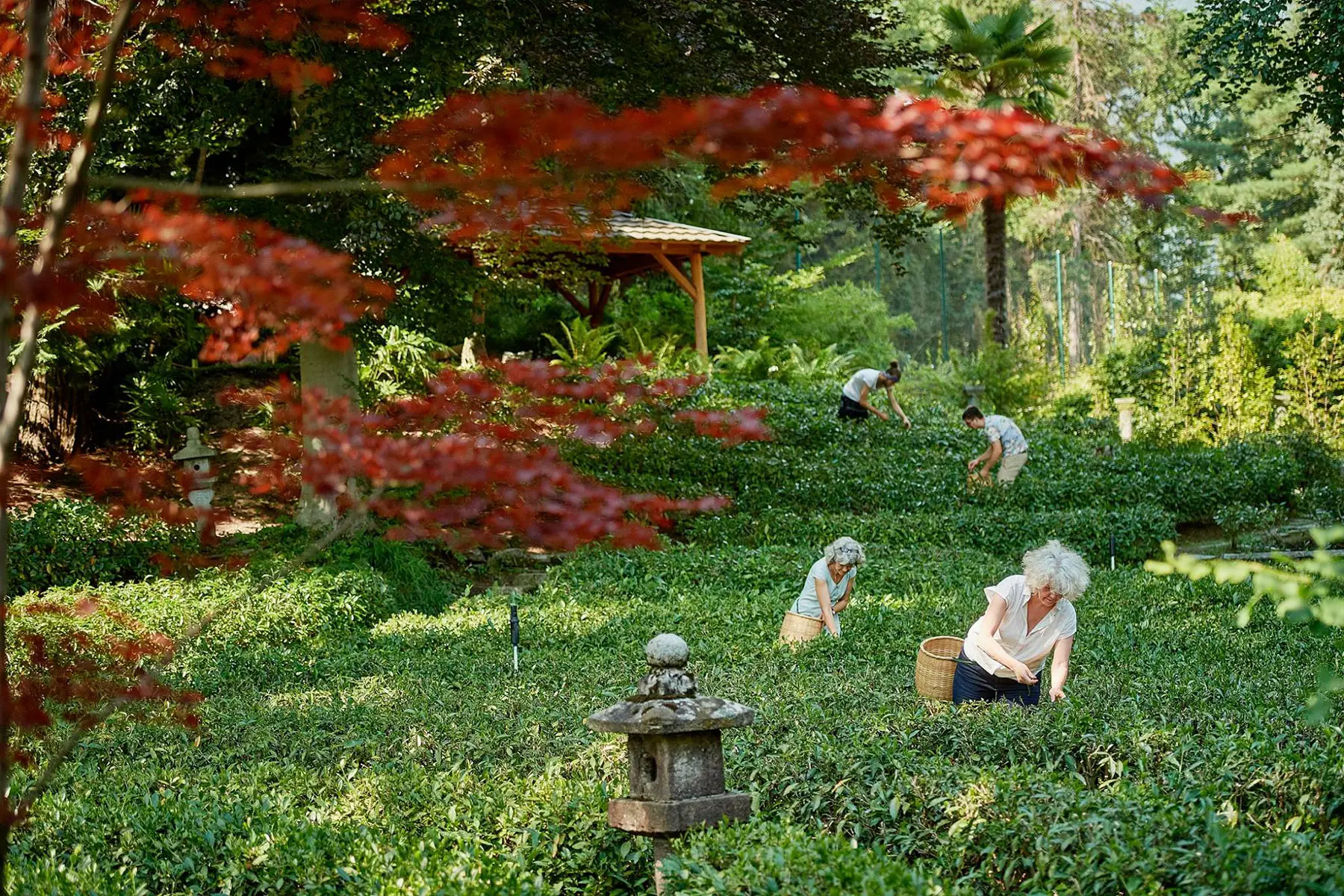
Hot chocolate
Hot chocolate is also very much part of Swiss drinking culture. Historically, it was served at people’s bedsides. Nowadays, though, it is enjoyed any time of the day.
The nation’s most popular brand of drinking chocolate powder is Caotina. Its parent company, Wander, also produces another powdered drink called Ovomaltine. The formula consists of malt, milk powder, cocoa powder, whey protein, corn syrup, egg, yeast, and honey. It was first developed in the early 20th century by the Wander family itself. By the 1920s, it was being marketed as a healthy drink for the whole family. It was enjoyed by all, from the upper to the lower classes.
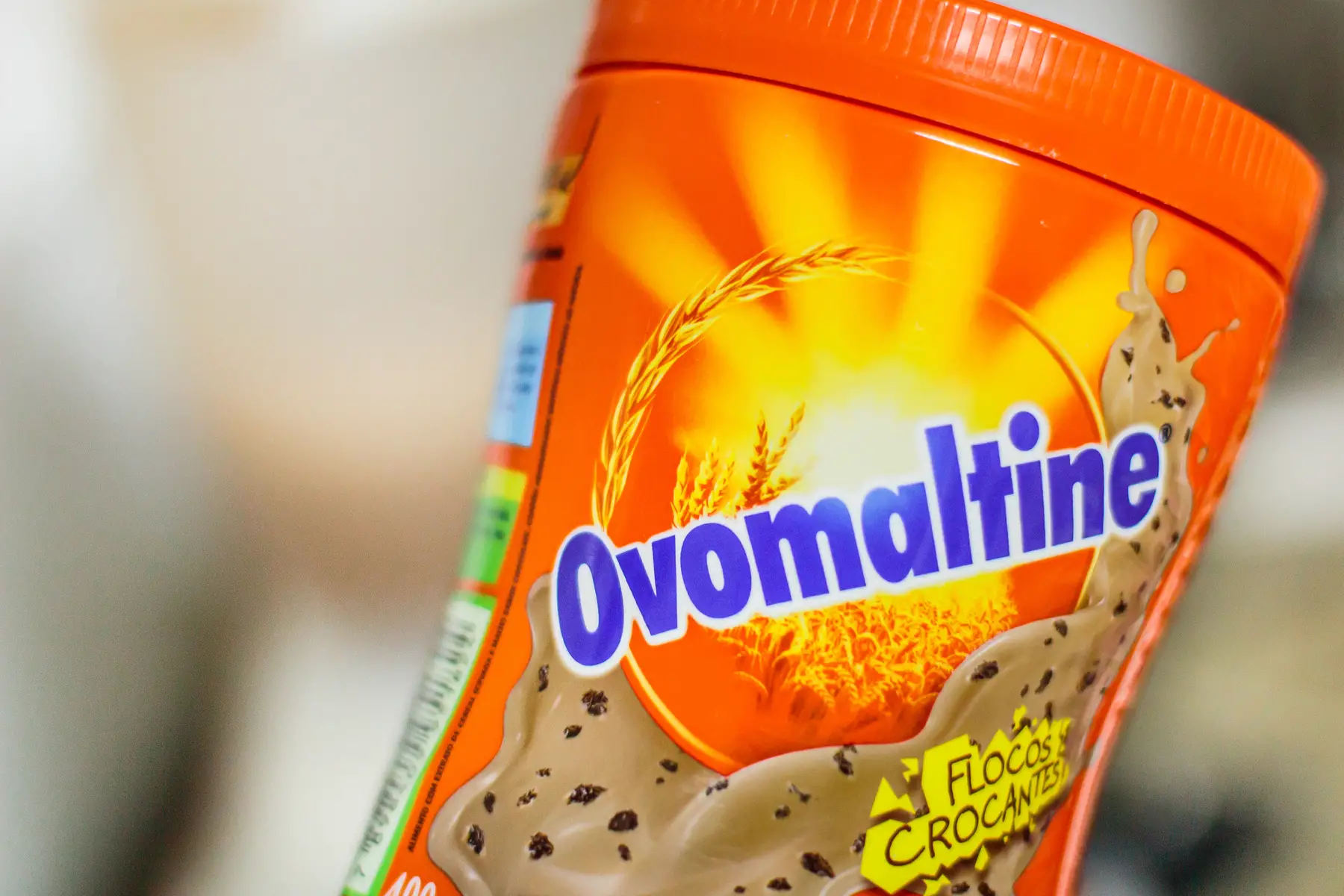
Ovomaltine soon became a pantry staple, and, during WWII, a source of national pride. Indeed, people deemed it a patriotic way to support the country. It was also used as an emergency ratio that could help prevent vitamin deficiencies. Today, the Swiss still consume plenty of Ovomaltine in the morning. Generations have grown up with the drink and due to its highly nourishing ingredients, it has become a popular beverage for hiking. While the company that owns the brand is no longer Swiss, the product is still made in Bern. Furthermore, it is marketed in almost 100 countries, from Zimbabwe to Qatar and Russia to Ecuador. In some parts of the world, however, it goes by the name of Ovaltine.
Coffee
Tea and hot chocolate might be popular drinks in Switzerland, but it’s coffee that takes the crown as the nation’s favorite hot beverage. Similar to their Austrian neighbors, the Swiss enjoy a vibrant coffee culture, with plenty of great cafes serving strong cups of joe.
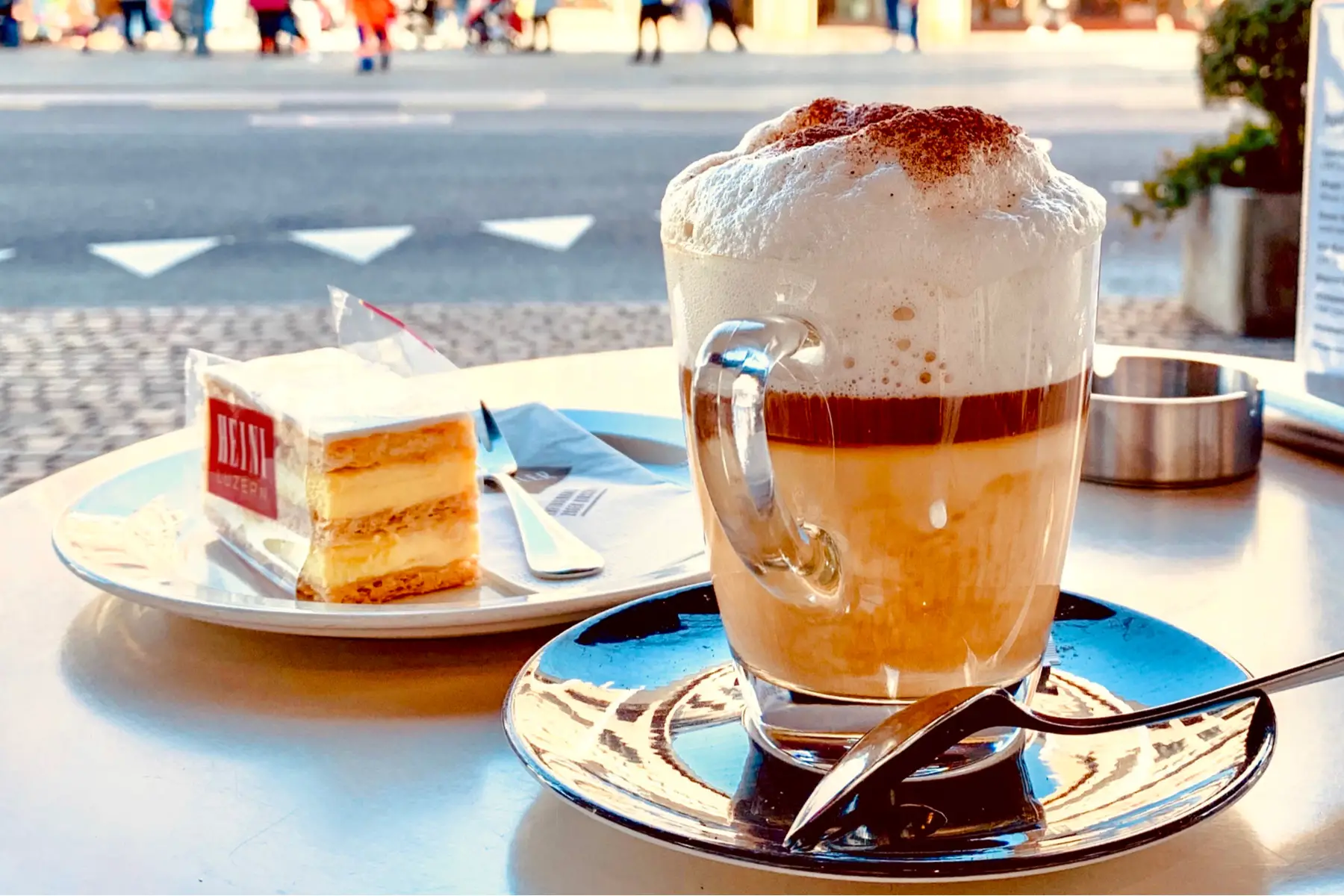
In fact, ‘coffee breaks’ are almost sacred to many locals, who enjoy a variety of takes on the classic beverage. Kaffe-crème, Schale, and Luzerner Kafi are just a few of the items that you will likely find on the menu. Even Swiss coffee brands are especially beloved, and rightfully so. From Nespresso to Mövenpick, and Sirocco to Egoiste, the bean trade is serious business in Switzerland.
Soft drinks in Switzerland
Switzerland produces several different varieties of soda, many of which you won’t find outside the country. All of them are at the heart of the Swiss drinking culture. The nation’s penchant for soft drinks dates back to the late 1930s and even includes an attempt at cola, Vivi Kola, which was created in 1938.
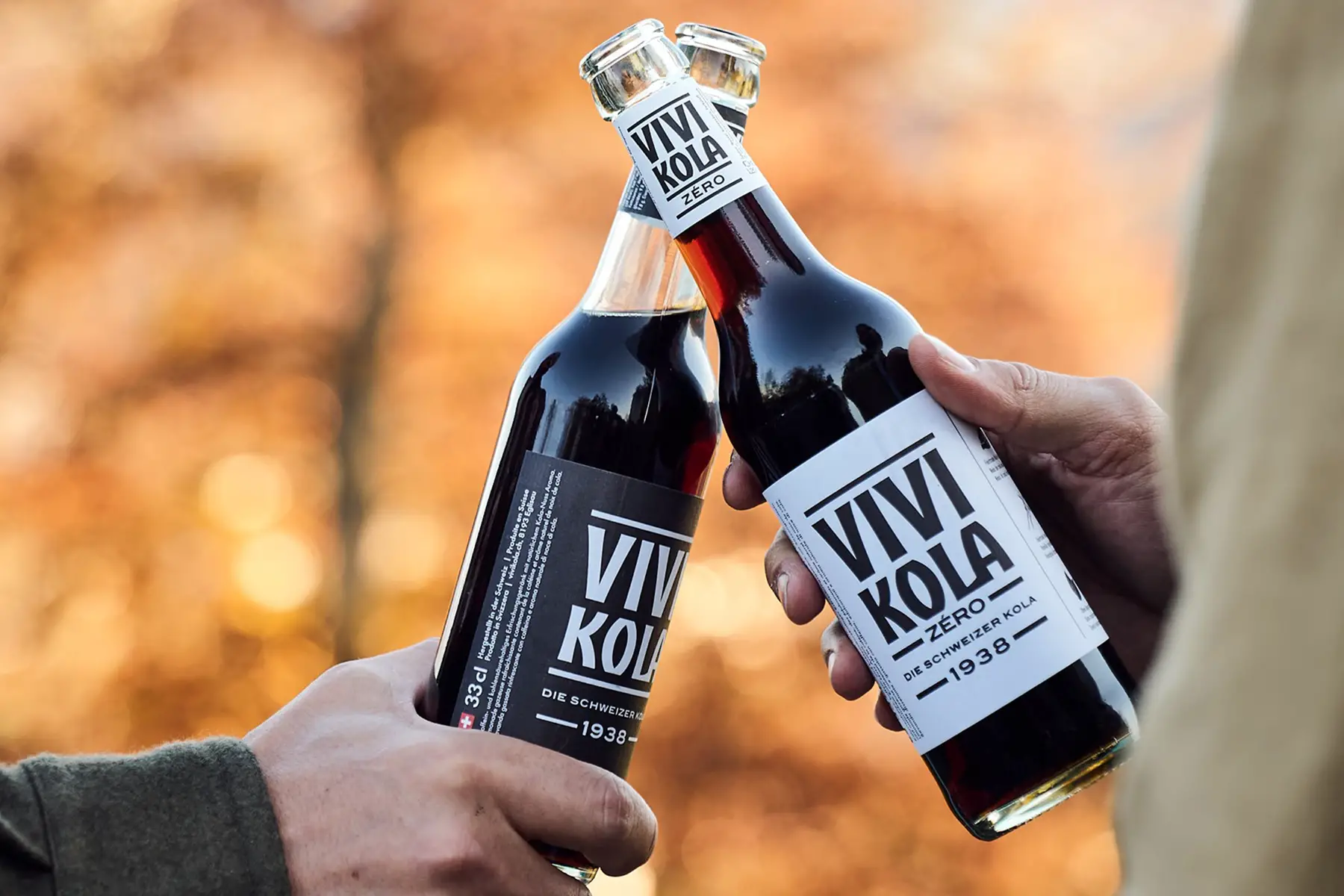
Today, the most popular Swiss soda drink is Rivella, which is made from a mix of minerals, micronutrients, and lactose. This is rightfully considered to be ‘the Swiss national drink’, with a market share of around 15%; second only to Coca-Cola.
Other popular soft drinks include Passaia, a passion fruit-flavored drink that has been around since the 1960s, and Appenzell Flauder, a fruity blend made with elderberries and lemon balm. Elmer Citro is another popular flavored mineral water that features lemon peel oil. Many people also enjoy Pepita, which is carbonated water infused with grapefruit. In fact, the latter is even listed in the national directory of traditional Swiss food products maintained by Patrimoine Culinaire Suisse (Swiss Culinary Heritage).
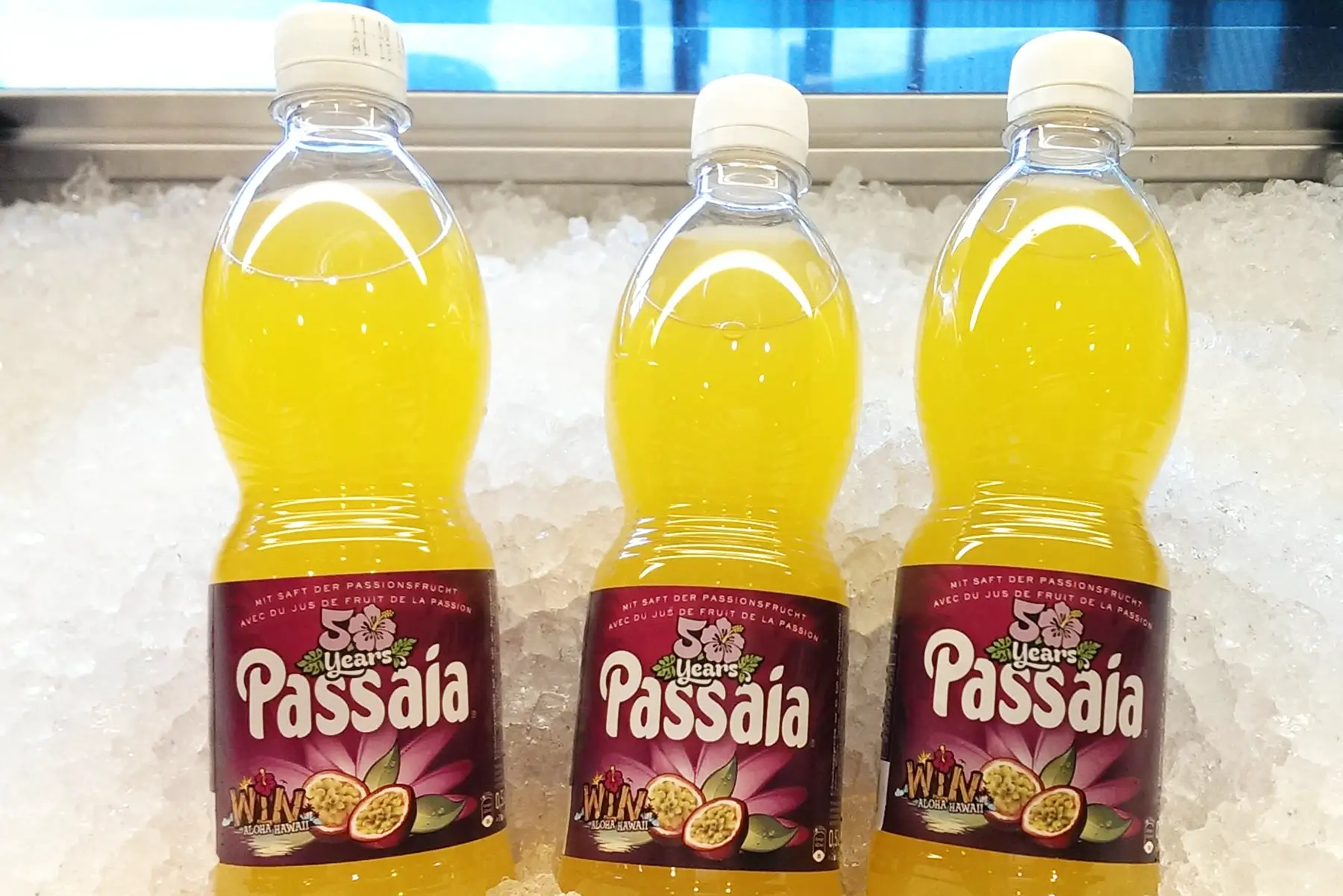
The Swiss often enjoy these artificially sweetened drinks with their meals or as refreshers during mountain hikes. That said, market research conducted in 2020 shows that the COVID-19 pandemic has led consumers across the country to be more health-conscious and thus cut back on unhealthy and sugary drinks.
Indeed, sugar consumption has been a major factor behind rising obesity, which cuts nearly two years off Swiss life expectancy and costs the country around CHF 8 billion francs per year. Nevertheless, Switzerland still has a higher sugar consumption per person than other European countries, including Austria, France, Germany, and Italy.
Drinking alcohol in Switzerland
Drinking alcohol is common in Switzerland, especially in social contexts and as a way to unwind at the weekend. While wine and beer are especially popular, each canton also has its favorite liquors. Evenings are when you will typically find people pouring their libations at cafes, bars, and restaurants. Of course, there are many beer festivals in Switzerland that take place throughout the country and attract thousands of visitors too.

If you want to drink like a local, you should also wait until everyone else in your group has been served their drink before you clink glasses, and say santé or Prost. You should also look all your fellow drinking buddies in the eye before you take your first sip, as this is thought to bring good luck. Discover other quirky drinking rules in Europe.
Alcohol laws in Switzerland
The legal drinking age in Switzerland depends on the canton but ranges from between 16 and 18 years old for beer and wine. The legal age for drinking spirits, however, is 18. That said, it is not illegal for a minor – or anyone else for that matter – to consume alcohol in public. In fact, public drinking isn’t illegal in the country, nor frowned upon. Like in many parts of Europe, drinking in public spaces isn’t a big deal at all.
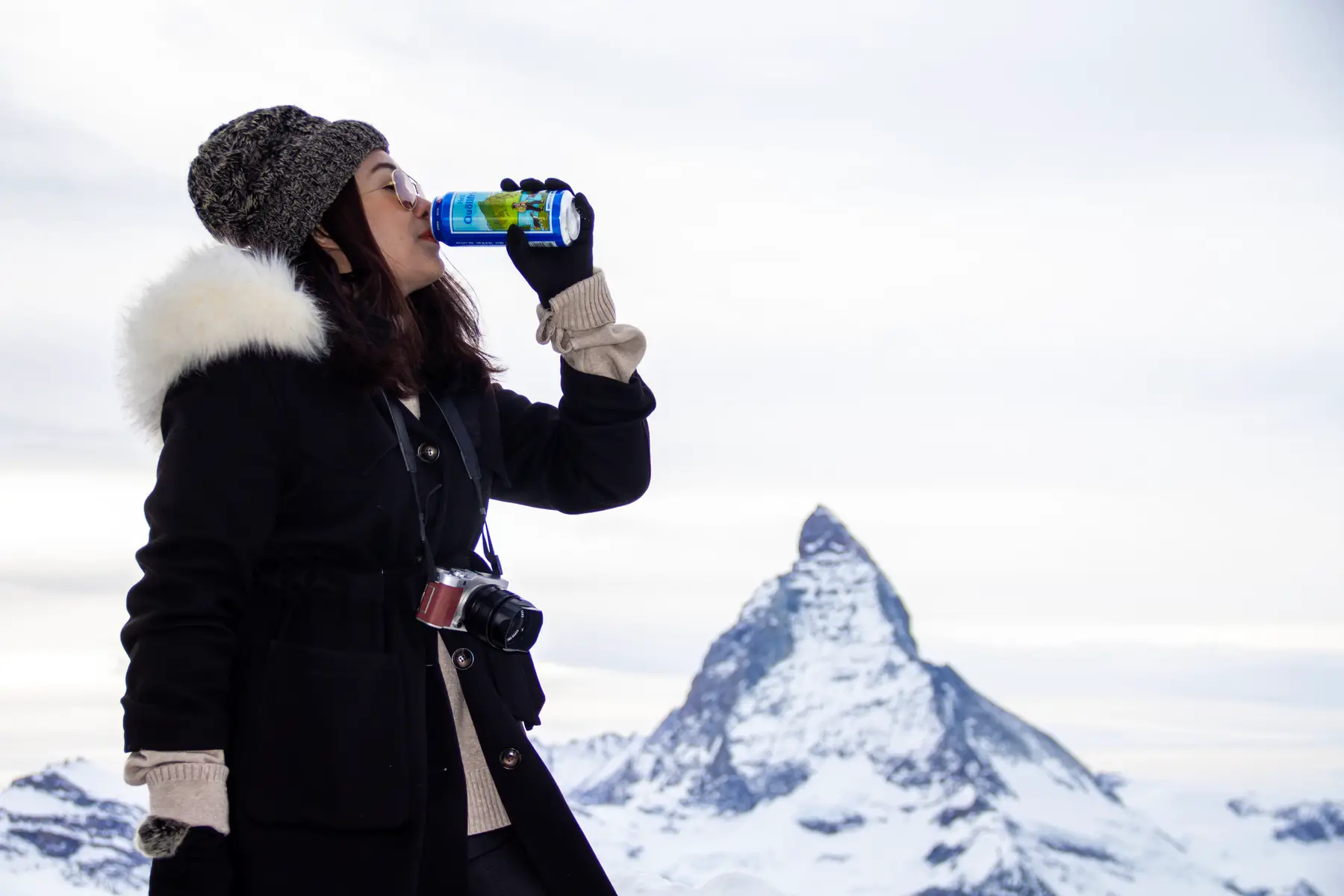
That said, the laws surrounding drunk driving in Switzerland are severe, and this doesn’t just apply to cars. If you drive a vehicle, motorboat, or even a pedalo (paddle boat) with a breath alcohol content of over 0.25mg/l or a blood alcohol content of over 0.05%, you can expect to face legal consequences. Criminal proceedings range from financial penalties and warnings to license revocation and even imprisonment.
Bars and clubs in Switzerland are busiest at the weekends and can legally stay open (and serving) until 05:00. However, you won’t find adverts for liquor on the television. Switzerland actually has a ban on advertising spirits on TV and a youth protection policy for wine and beer. There is also a ban on the promotion of spirits. In fact, product information for spirits is only allowed on billboards, print media, and inside cinemas.
Popular alcoholic drinks in Switzerland
Like many countries in Europe, Switzerland has a thriving beer and wine industry that is well worth exploring through its many breweries and vineyards. In fact, visiting these is one of the most enjoyable things to do in the country.
Beer
Whether you say bier (in Swiss-German), biere (in Swiss-French), or birra (in Swiss-Italian), the mere mention of the drink will win you many approving nods in Switzerland. In fact, the country has a brewing tradition that stretches back to ancient times, and its current-day craft beer scene is a key part of Switzerland’s drinking culture.
The country also boasts the highest number of microbreweries per capita in the world. As of 2017, there were 883 scattered throughout the country, from the low-lying town of Ascona in the south to the mountainside resort of Davos high up in the Alps. On average, these produce 4.163 hectoliters of beer per year which is served in restaurants and bars across the country.

The most popular Swiss beers are Calanda Lager, Hopfenperle, Calanda Braü, and Feldschlösschen. The latter is actually the biggest brewery in the country and was founded in 1876. Its name means ‘small castle in the fields’ in German, which is why the building is shaped like one.
Feldschlösschen was acquired by Carlsberg in 2000 and has now become the leading Swiss beverage company. In fact, despite the wide range of beers in production in Switzerland, Carlsberg and Heineken remain the top-selling brands.
Wine
Thanks to its fertile soil and sunny weather, Switzerland is home to a plethora of beautiful vineyards; some of which have earned UNESCO World Heritage status. In fact, the country boasts 15,000 hectares of independent vineyards that sprawl from Valais and Geneva to Ticino and Seeland.
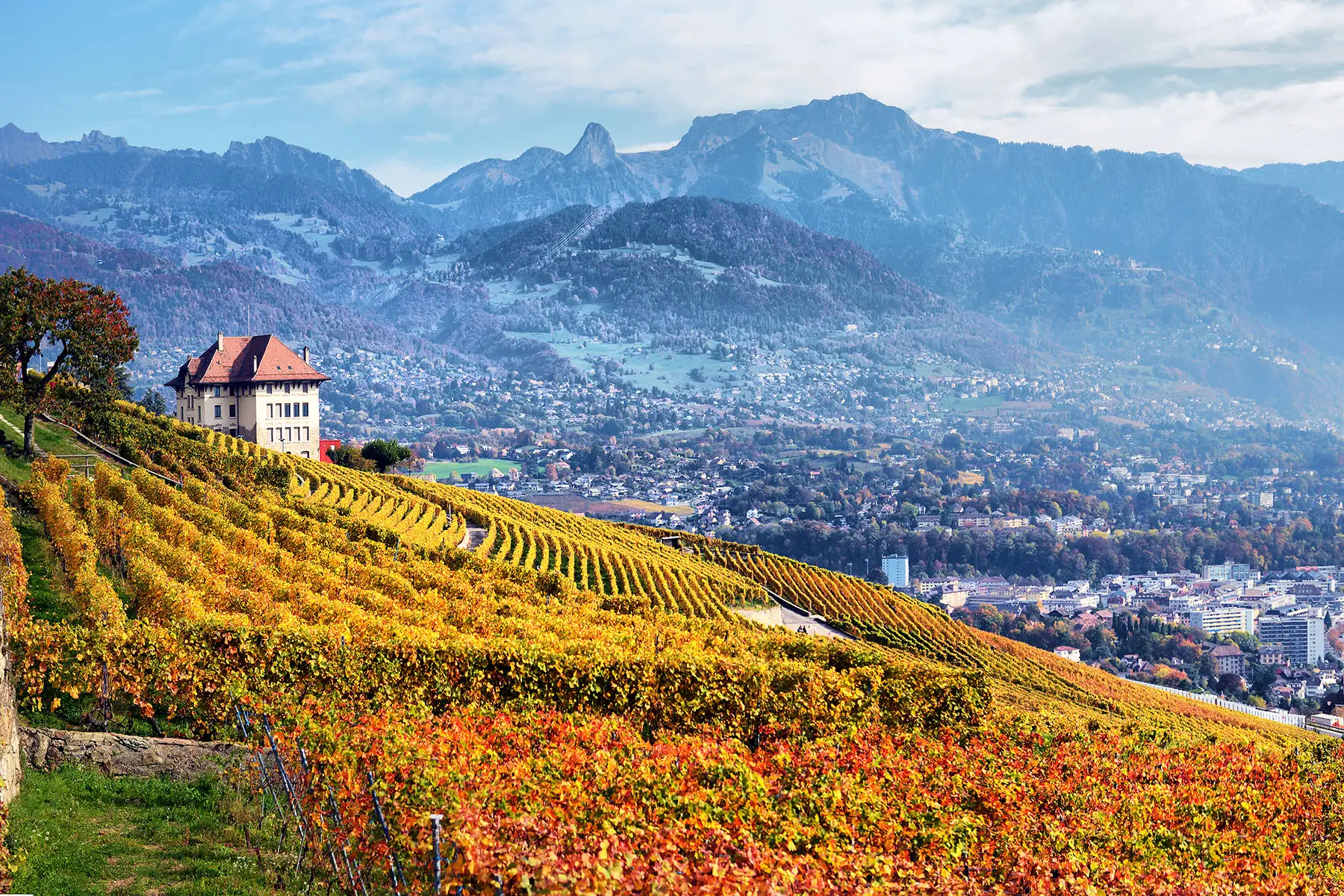
These vineyards mostly produce white wines, and the most typical Swiss variety is Chasselas. This is a slightly sparkling white that is grown across French-speaking Switzerland. Pinot noir is another standout variety and is popular everywhere except for Ticino, where merlot is the star of the show.
How you order your wine will also depend on the canton you are in. After all, because French, German, and Italian are all official languages in Switzerland, wein, vin, or vino will all get you a tipple.
Liquors
Whether sipped on their own or mixed into coffee, tea, or hot chocolate to warm you up after a day on the slopes (or hitting the country’s many hiking trails), Swiss liquors are very much part of Switzerland’s drinking culture. While you will find different varieties in every region of the country, the most popular ones nationwide are Kirsch or Kirschwasser (a brandy made from cherries) and Pflümli, a sort of Irish coffee made with plum liquor.

Other local offerings include Röteli, a cherry-flavored libation that is favored in Graubünden, and Williamine, a fruit brandy that is made from Williams pears and enjoyed in Valais. Grappa is another popular liquor that people in the Italian-speaking canton of Ticino particularly enjoy. It is made by distilling the skins, pulp, seeds, and stems that are left over after pressing the grapes during the winemaking process.
The Swiss also enjoy absinthe, which is said to have been invented in the town of Val-de-Travers, in the canton of Neuchâtel. A few dozen distilleries in the area still make the potent libation today.
Other popular drinks in Switzerland
Milk
Unsurprisingly, Swiss milk is among the best in the world. Thanks to almost 20,000 dairy farmers and their 560,000 cows, the country produces a combined volume of almost 4 billion kilograms of milk per annum. In fact, the Swiss love the white stuff so much that they have even invented a milk-based soda – Rivella – which is the closest thing to a national drink.

Needless to say, if you are looking to enjoy a refreshing, cold drink in Switzerland, you won’t be disappointed when you sip on a fresh glass of the country’s finest. And you won’t be alone. After all, the average Swiss drinks 70 liters of milk a year which amounts to 233 glasses!
Useful resources
- The Federal Council – information on spirits and facts about beer in Switzerland
- My Switzerland – information about alcohol and tobacco in the country
- Liquor.com – an article Switzerland’s Spirits Scene Is Anything but Neutral
- PubClub.com – an article 10 Things To Know About Switzerland Nightlife & Drinking Laws
